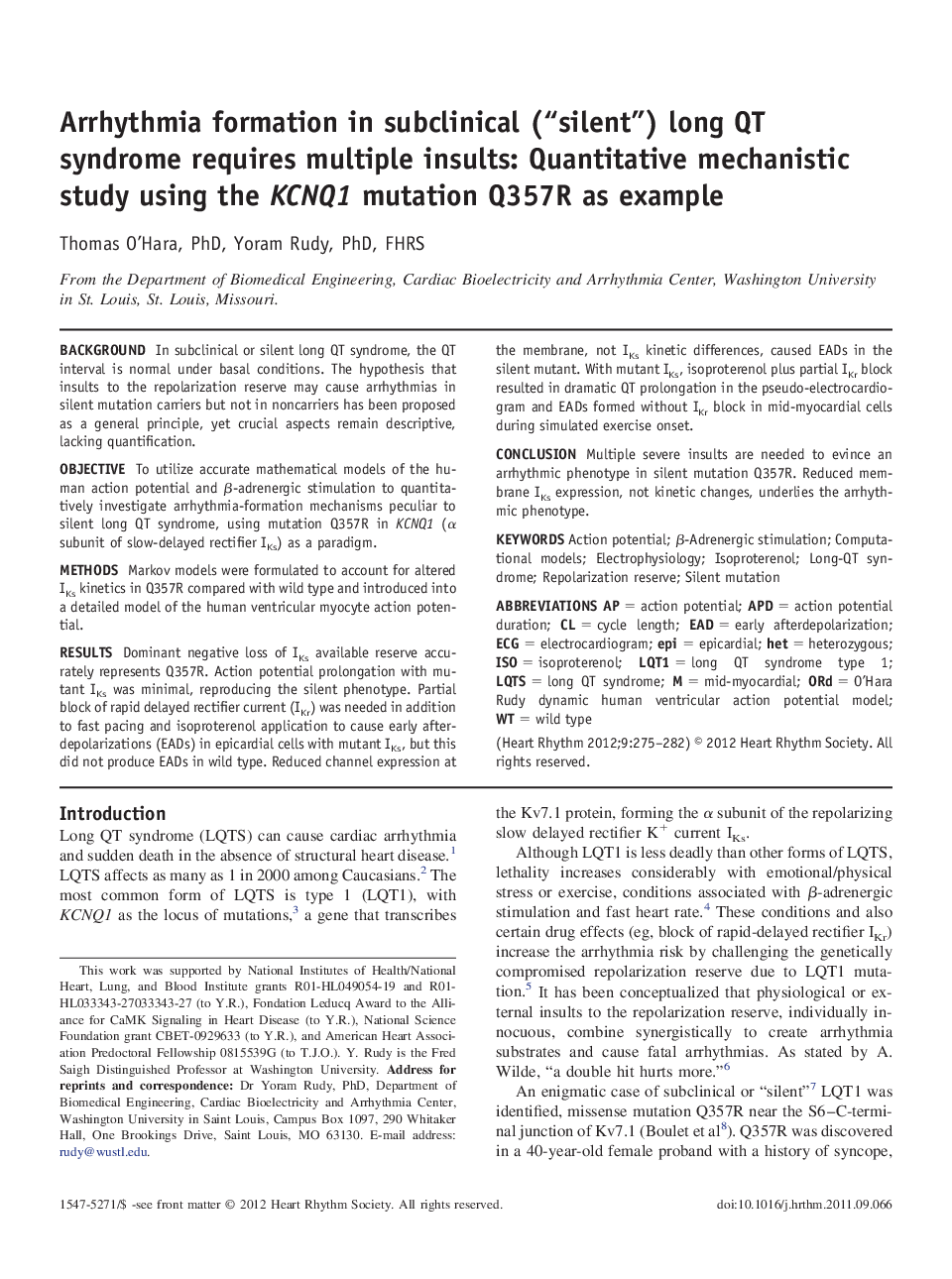| Article ID | Journal | Published Year | Pages | File Type |
|---|---|---|---|---|
| 2923357 | Heart Rhythm | 2012 | 8 Pages |
BackgroundIn subclinical or silent long QT syndrome, the QT interval is normal under basal conditions. The hypothesis that insults to the repolarization reserve may cause arrhythmias in silent mutation carriers but not in noncarriers has been proposed as a general principle, yet crucial aspects remain descriptive, lacking quantification.ObjectiveTo utilize accurate mathematical models of the human action potential and β-adrenergic stimulation to quantitatively investigate arrhythmia-formation mechanisms peculiar to silent long QT syndrome, using mutation Q357R in KCNQ1 (α subunit of slow-delayed rectifier IKs) as a paradigm.MethodsMarkov models were formulated to account for altered IKs kinetics in Q357R compared with wild type and introduced into a detailed model of the human ventricular myocyte action potential.ResultsDominant negative loss of IKs available reserve accurately represents Q357R. Action potential prolongation with mutant IKs was minimal, reproducing the silent phenotype. Partial block of rapid delayed rectifier current (IKr) was needed in addition to fast pacing and isoproterenol application to cause early afterdepolarizations (EADs) in epicardial cells with mutant IKs, but this did not produce EADs in wild type. Reduced channel expression at the membrane, not IKs kinetic differences, caused EADs in the silent mutant. With mutant IKs, isoproterenol plus partial IKr block resulted in dramatic QT prolongation in the pseudo-electrocardiogram and EADs formed without IKr block in mid-myocardial cells during simulated exercise onset.ConclusionMultiple severe insults are needed to evince an arrhythmic phenotype in silent mutation Q357R. Reduced membrane IKs expression, not kinetic changes, underlies the arrhythmic phenotype.
